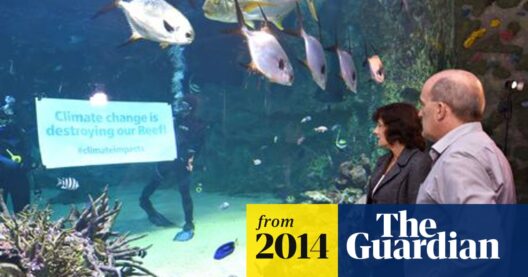Indonesia, an archipelago of over 17,000 islands, is often lauded for its breathtaking beaches, rich biodiversity, and vibrant cultures. However, beneath this picturesque facade lies an unsettling reality: the creeping threat of rising sea levels. This phenomenon, driven by climate change, is not a distant concern, but an imminent and pressing challenge affecting millions of Indonesians, their livelihoods, and the very essence of their homeland.
In recent years, the changes in weather patterns and rising ocean temperatures have sparked an undeniable urgency. Among the most alarming indicators of this trend is the frequent inundation of coastal areas, leading to the slow yet persistent erosion of shorelines. The impacts of climate change are felt acutely in Indonesia, where many communities reside in low-lying coastal regions.
The urgency of addressing rising sea levels cannot be overstated. Recent studies suggest that Indonesia’s average sea level is rising approximately 3.2 millimeters per year, a rate significantly higher than the global average. This phenomenon is particularly alarming for cities such as Jakarta, where much of the land is not only sinking due to over-extraction of groundwater but is also increasingly vulnerable to flooding and storm surges. The consequences of such a juxtaposition are dire, leading to loss of property, displacement, and heightened socio-economic vulnerabilities.
One of the core reasons for the profound concern surrounding Indonesia’s vanishing shores is the interplay of human activity and natural processes. Deforestation, for instance, exacerbates coastal erosion and reduces the ability of ecosystems to buffer against rising waters. Coastal mangroves, which serve as vital ecosystems and sanctuaries for countless species, are being indiscriminately cleared for agricultural and urban development. The destruction of these environments not only accelerates the loss of biodiversity but also undermines natural defenses against sea encroachment.
In addition to deforestation, urbanization presents formidable challenges. Rapid economic growth has led to a surge in population density in coastal areas, further straining infrastructure and natural systems. The city of Jakarta exemplifies this crisis, where the convergence of economic opportunity and pragmatic necessity has led to a population swell that now exceeds ten million residents. An overburdened infrastructure, particularly in flood-prone regions, exacerbates the risks associated with rising sea levels, ultimately creating a perilous cycle that threatens the city’s sustainability.
Another disconcerting reality is the socio-economic disparity that often accompanies climate change-related impacts. The poorest communities are disproportionately affected by these changes, lacking the resources to adapt or relocate. Many families depend on agriculture or fishing, both of which are directly threatened by coastal degradation and rising waters. The existential threat posed by climate change reinforces socio-economic stratification and may lead to increased migration pressures as individuals seek safer conditions. The ripple effects of such displacement can lead to conflict and social instability, compounding the challenges already faced by affected communities.
Moreover, the intricate ecosystems that once thrived along Indonesia’s coasts are rapidly vanishing. Coral reefs, already under siege from rising ocean temperatures and acidification, are facing additional pressures from increased sedimentation and pollution due to land use changes. These reefs play a critical role—not just in supporting marine biodiversity but also in protecting coastlines from wave action and storm surges. The loss of these natural barriers further exposes coastal settlements to the ravages of climate change, creating a precarious situation that demands urgent intervention.
Despite these stark realities, there exists a window of opportunity for Indonesia to confront the challenges posed by rising sea levels. The integration of sustainable practices into urban planning is paramount. For instance, fostering eco-friendly development approaches, such as necessary investments in green infrastructure, can significantly bolster resilience against flooding. Additionally, the restoration of mangrove forests and coral reefs is essential to strengthening coastal defenses and promoting biodiversity recovery.
International cooperation also plays a crucial role in addressing the multifaceted challenges of climate change. Collaborative efforts among nations can facilitate knowledge sharing and resource mobilization to support adaptation strategies in vulnerable regions. Investment in research and technology can spur innovative solutions to mitigate the impacts of rising sea levels and promote sustainable coastal management practices.
The story of Indonesia’s vanishing shores is not merely one of environmental degradation but a complex tapestry of interconnected challenges that paves the way for deeper contemplation of humanity’s relationship with nature. The enchantment that draws people to Indonesia—the idyllic landscapes, the vibrant cultures, and the rich biodiversity—is intricately linked to the health of its ecosystems. The reality of rising sea levels presents an opportunity for reconsideration of values and actions that can either perpetuate destruction or foster a sustainable equanimity.
In summation, the plight of Indonesia’s coastal regions is a microcosm of the broader implications of climate change. It starkly demonstrates the urgent need to rebalance our interactions with the environment. By embracing eco-centric approaches and fostering community resilience, there is potential not only to safeguard Indonesia’s shores but also to inspire concerted action on a global scale. The path forward must be rooted in understanding, respect, and an unwavering commitment to protect the delicate ecosystems that sustain our planet.







